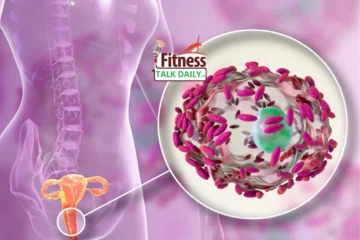A migraine is more than a simple headache; it’s a complex neurological condition that affects various facets of an individual’s life. With distinct indications and triggers, understanding the effective management of migraines is essential.
Types of Migraine:
- Migraine with Aura: Involves sensory changes or visual disturbances preceding the headache. Auras may cause blurred vision, tingling sensations, or speech difficulties.
- Migraine without Aura: Headaches occur without preceding sensory or visual disturbances. The pain remains intense and throbbing but lacks additional sensory experiences.
Migraine Symptoms:
- Throbbing Head Pain: A pronounced symptom is the throbbing or pulsating pain, often localized to one side of the head.
- Light and Sound Sensitivity: Migraine sufferers often become extremely sensitive to light and sound during attacks, intensifying discomfort.
- Nausea: Commonly accompanied by vomiting and nausea contributes to unease during episodes.
- Visual Disturbances (Auras): Some experience auras, visual disturbances preceding migraines, such as flashing lights, zigzag patterns, or temporary blind spots.
Causes of Migraine:
- Specific foods (cheese, chocolate, etc.)
- Hormonal imbalances
- Stress
- Irregular sleep patterns
- Environmental factors (bright lights, strong smells, weather changes)
- Excessive caffeine
- Dehydration
- Skipped meals
- Sensory stimuli (loud noises, bright lights, strong odors)
- Overuse of remedies
- Hypersensitive reactions
Diagnosing Migraine:
- Symptom Assessment: Throbbing head pain, light and sound sensitivity, and nausea are indicative symptoms.
- Medical History: A detailed history helps understand headache patterns and rule out other conditions.
- Physical Examination: Detecting other signs or issues contributing to headaches.
- Ruling Out Other Causes: Distinguishing migraines and other conditions like tension headaches or infections.
- Diagnostic Criteria: Comparing symptoms with established criteria.
- Tracking Headaches: Maintaining a headache diary to identify patterns.
- Imaging and Tests: MRI or CT scans to rule out underlying causes.
Migraine Treatment:
- Over-the-counter pain relievers
- Prescription medications
- Anti-nausea medicines
- Hydration
- Biofeedback
- Acupuncture
- Avoiding triggers
- Dietary supplements (vitamin B2, coenzyme)
Lifestyle Modifications for Migraine Management:
- Consistent sleep schedule
- Stress management
- Hydration
- Balanced meals
- Limit caffeine and alcohol
- Avoid strong odors
- Manage screen time
- Create a relaxing environment
- Maintain routine
Home Remedies for Migraine:
- Rest in a calm space
- Apply cold or warm compresses
- Gentle neck stretches
- Intake of small amounts of caffeine
- Scalp massage
- Stay in a dark, quiet environment
- Consistent meals
Preventive Measures to Reduce Migraine Frequency:
- Daily medications
- Avoid trigger foods
- Hydration
- Regular meals
- Regular sleep
- Stress management
- Exercise
- Limit alcohol consumption
- Biofeedback
- Regular check-ins
The Link Between Migraine and Other Health Conditions: Research suggests connections between migraines and conditions like depression, anxiety, and cardiovascular disorders, leading to comprehensive treatment approaches.
Migraine in Children and Adolescents: Recognizing unique challenges in managing migraines in younger individuals is vital to effective care.
Coping Techniques for Migraine Attacks: Engaging in relaxation techniques, finding a quiet space, and using cold packs can help manage symptoms during attacks.
Migraine and Mental Health: Exploring the Relationship: Understanding the complex interplay between migraines and mental health is crucial for holistic well-being.
Women and Migraine: Unraveling the Connection: The hormonal changes, especially related to the menstrual cycle, influence migraines in women. Understanding these patterns aids effective management.
Migraine and Work Productivity: Collaborative efforts between employers and employees can create supportive environments for those facing migraines problem.
Migraines are intricate neurological conditions that extend beyond mere headaches. Armed with knowledge of symptoms, triggers, and diverse management strategies, individuals can proactively diminish the impact of migraines on their lives.
FAQs:
- Can migraines be completely cured? Migraines can’t be cured but can be managed through treatments and lifestyle changes.
- Are migraines hereditary? Of course, genetics play a role, with a family history increasing the likelihood.
- Can stress trigger migraines? Of course, stress is a common trigger, and managing it can reduce attacks.
- What’s an aura, and do all migraines have it? Aura precedes some migraines, characterized by neurological symptoms.
- When should I seek medical attention for my migraines? Seek medical help for sudden or severe changes in migraine patterns.




